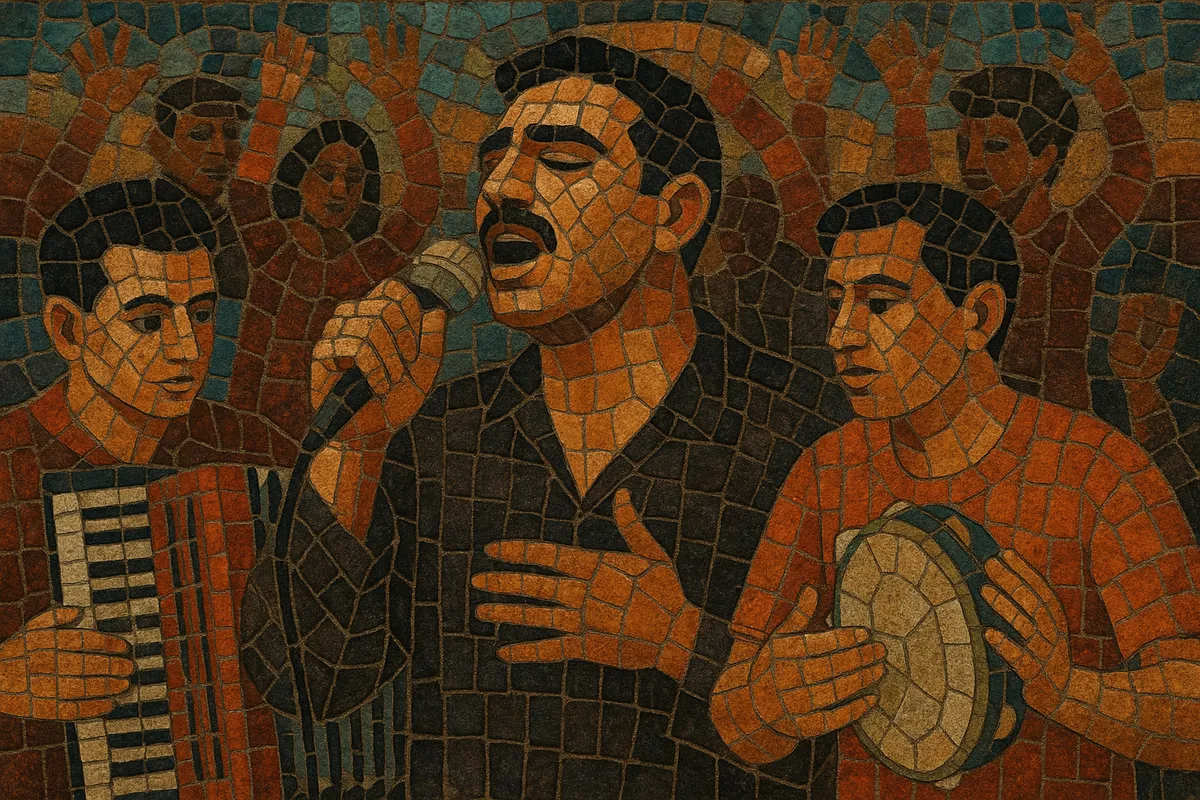Shaabi (often transliterated sha‘bi, meaning “of the people” or “popular”) is an urban Egyptian street-pop style rooted in working-class neighborhoods and wedding culture.
It fuses Egyptian folk dance rhythms (especially maqsoum/baladi and sa‘idi) with colloquial Cairo Arabic lyrics, catchy accordion or mizmar riffs, and, from the 1980s onward, drum machines and quarter-tone keyboards. Melodies draw on Arabic maqam practice (notably Bayati, Hijaz, and Nahawand), with expressive microtonal ornamentation and frequent mawwal-style improvised vocal preludes.
The vocal delivery is direct, gritty, and conversational, often humorous or satirical, and designed to energize a dancefloor via call-and-response hooks. Compared with classical Egyptian tarab and polished mainstream pop, shaabi is rawer in timbre, more rhythm-forward, and unapologetically grounded in everyday life and street aesthetics.
Shaabi coalesced in Cairo’s working-class districts and wedding halls, synthesizing folk dance grooves with vernacular lyrics that spoke to everyday struggles and humor. While earlier popular forms set the stage, the genre crystallized in the early 1970s with stars like Ahmed Adaweya, whose cassette-era hits defined the sound and attitude of shaabi. The music thrived outside official cultural institutions, circulating through cabarets and street markets rather than state radio.
Cheap cassettes and informal distribution networks propelled shaabi across Egypt. Producers embraced synthesizers, drum machines, and quarter-tone keyboards, keeping the folk rhythmic language while modernizing textures. Artists such as Hassan El Asmar and Abdel Basset Hamouda brought shaabi further into mainstream consciousness, even as its frank, often satirical lyrics kept it tied to its street roots.
Satellite TV, video clips, and a booming wedding industry amplified shaabi’s reach. The style diversified—from sentimental ballads to high-energy dance numbers—while preserving its core: maqsoum/sa‘idi grooves, colloquial storytelling, and crowd-rousing refrains. Wedding performers and nightclub singers helped codify performance conventions such as mawwal openings and call-and-response choruses.
In the late 2000s and early 2010s, younger artists fused shaabi’s melodies, street poetics, and dance energy with DIY digital production and hip-hop/EDM aesthetics, birthing mahraganat (often dubbed “electro shaabi”). This new wave retained shaabi’s raw vernacular charisma while pushing sonics into heavier bass, auto-tune, and rapid-fire beats. Regulatory debates and censorship periodically flared, but the lineage from classic shaabi to mahraganat and newer hybrids (e.g., trap shaabi) remains clear.


